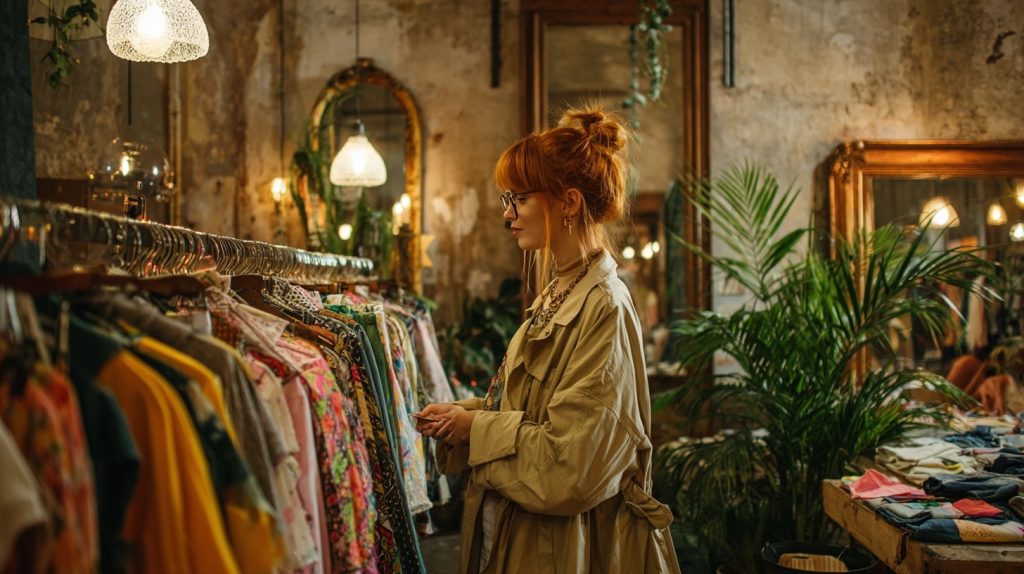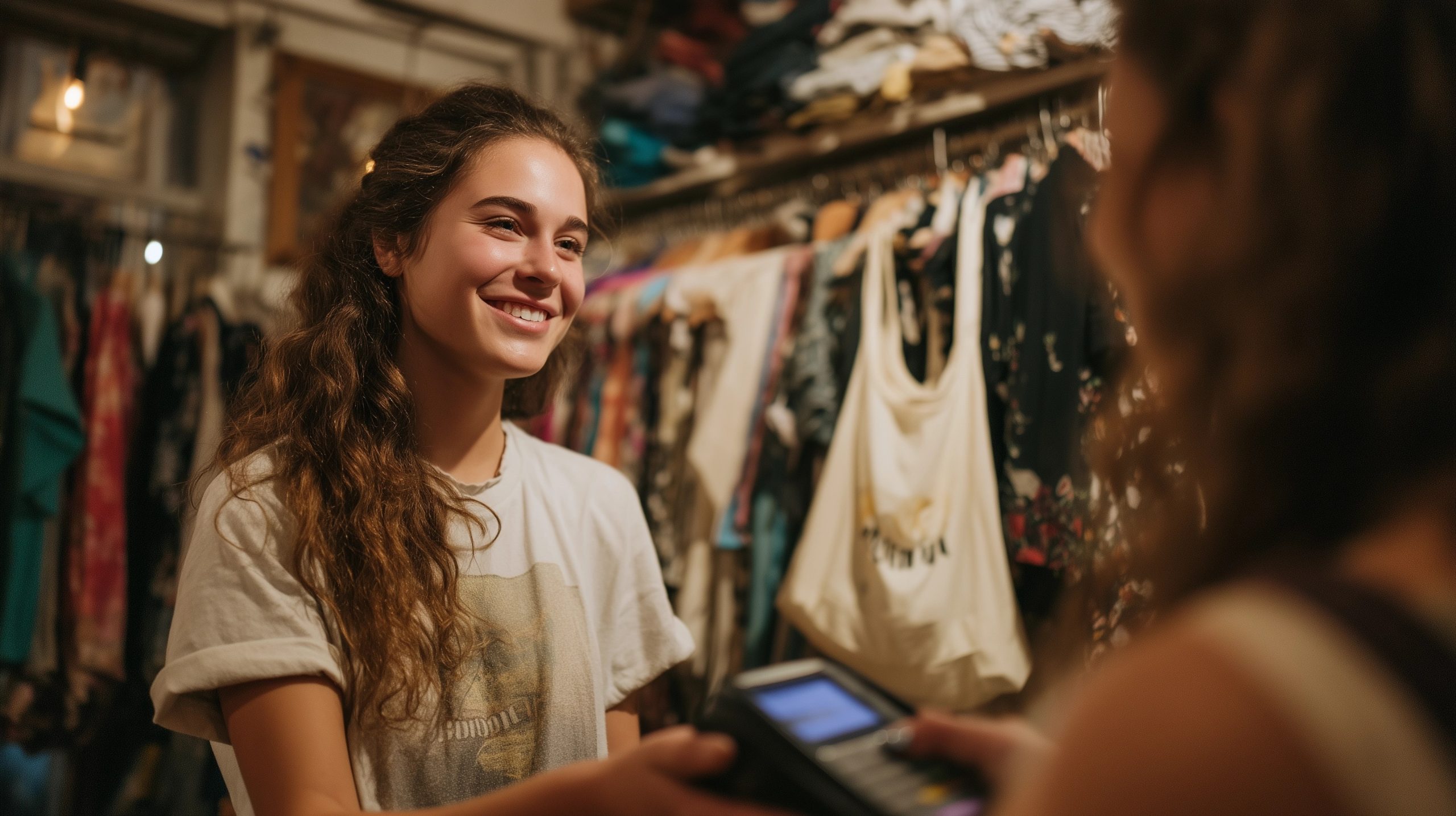By Futurist Thomas Frey
The Secondhand Revolution That’s Rewriting Consumer Culture
Ella Henry, a 21-year-old student at Western Kentucky University, bought all her holiday gifts secondhand last year. Not because she had to, but because she wanted to. She loved the hunt, the surprise of finding things you’d never see in regular stores. This year, her entire family followed her lead—all their Secret Santa gifts must be purchased secondhand.
She’s not an outlier. She’s the norm. About 86 percent of Gen Z shoppers say they’re more likely to purchase secondhand holiday gifts this year, according to eBay research. And traditional retailers are watching their future customer base walk right past their stores toward thrift shops, consignment outlets, and resale apps.
This isn’t a temporary trend driven by economic necessity, though Gen Z holiday spending is expected to fall 23 percent this year. This is a fundamental shift in what younger consumers value, how they define quality, and what shopping means to them. And it’s happening so fast that most major retailers still don’t understand what hit them.
Why This Goes Beyond Saving Money
The obvious explanation is economics—used clothing from premium brands costs less and often lasts longer than fast fashion equivalents. A used sweater that would cost $80 new might run $15 at a thrift store. For a generation facing student debt, high housing costs, and uncertain economic futures, the math is compelling.
But reducing this to financial pressure misses the deeper transformation. Gen Z shoppers, ages 13 to 28, are actively seeking pieces with character, history, and uniqueness. They grew up on social media where influencers made thrifting look fun, stylish, and deeply personal. They want something with a story, something you can’t find mass-produced in every mall.
“I’ve been thrifting for over 20 years, and it was definitely not cool when I was a teenager,” said Danielle Vermeer, head of product at ThredUp. “That’s the energy Gen Z brings to secondhand.” What was once associated with poverty or desperation has been completely reframed as creative, sustainable, and culturally sophisticated.
How Social Media Weaponized Thrifting Against Fast Fashion
The pandemic accelerated everything. During lockdowns, young people scrolled TikTok and absorbed environmental and labor critiques of fast fashion. They missed tactile experiences and finding joy offline. When restrictions lifted, thrifting delivered sustainability, nostalgia, community, and a reason to leave the house.
Social media amplified the trend exponentially. Thrift hauls, closet clean-outs, and “$20 thrift store challenge” videos rack up millions of views. Posts tagged #Thriftmas and #ThriftHaul flood feeds during holiday season. Teens show up at resale stores and film the entire outing, turning shopping into content creation. The CEOs of BaseCamp Franchising report that social documentation has become integral to the thrifting experience.
This creates a self-reinforcing cycle: thrifting generates engaging content, which inspires more thrifting, which creates more content. Traditional retail can’t compete because their shopping experience doesn’t translate into compelling social media—there’s nothing interesting about buying the same mass-produced item everyone else has.

The Throwback Fashion Economy
Another factor driving secondhand demand is the return of older aesthetics. Jasmine Simpson, a 25-year-old social media specialist in Brooklyn, hunts for clothes and jewelry channeling the early 2000s—TLC, Destiny’s Child, old-school denim, anything that looks like it could’ve been in a music video. Her favorite score? A fur coat for $40.
Last Christmas, her sister gave her secondhand Chanel shoes for around $325, and this year she wants to return the favor. She’ll start hunting online this weekend, then shift to brick-and-mortar thrift stores if nothing materializes. Premium brands purchased secondhand signal both taste and values—you appreciate quality but reject paying full retail and contributing to overproduction.
Hannah Moffitt, a 25-year-old content creator in Hartford, initially took a dim view of thrifting—her local Goodwill never had her size and felt messy. But a spontaneous trip to Savers with her fiancé changed everything. Now she shops mostly secondhand or from small businesses, and her gift list has shifted completely. Last year she split holiday shopping between thrift and big-box stores. This year, she’s going fully secondhand—right down to the wrapping paper and boxes. She and her fiancé even plan to thrift their wedding décor.
“One man’s trash is another’s treasure,” she said.
What Traditional Retail Is Missing
The shift to secondhand represents more than changing purchasing behavior—it’s a fundamental revaluation of what makes products desirable. Gen Z has inverted traditional retail logic: instead of wanting what everyone else has, they want what nobody else has. Instead of valuing newness, they value history. Instead of seeking convenience, they value the hunt.
Traditional retailers built their empires on standardization, predictability, and the appeal of having the latest thing first. Gen Z is systematically rejecting all three premises. They’d rather have a unique vintage piece with character than this season’s trendy item that everyone’s wearing. They’d rather spend an afternoon searching for the perfect secondhand find than click “buy now” on Amazon.
Major retailers are responding with their own resale platforms and sustainability initiatives, but they’re fundamentally misunderstanding the appeal. It’s not just about environmental consciousness or saving money—it’s about the experience, the story, the hunt, and the social capital that comes from finding something remarkable that nobody else has.
Final Thoughts
When 86 percent of a generation says they’re more likely to buy secondhand than they were previously, that’s not a trend—that’s a tectonic shift. Gen Z isn’t just shopping differently during economic downturns. They’re building entirely new relationships with consumption, ownership, and what makes products valuable.
Traditional retail spent decades training consumers to want the new, the branded, the mass-produced. Gen Z learned those lessons and decided they wanted the opposite. They want the old, the unique, the discovered. And they’re remaking consumer culture in that image, one thrift store haul at a time.
Related Articles:
When AI-Generated Artists Start Topping the Charts: Who Gets the Royalties?
The Most Profitable Question in Business: What’s Still Missing in 2025?
Why Everything You Own Will Eventually Be Secondhand


